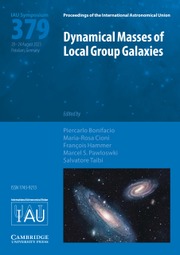Article contents
Spectropolarimetry with Extremely Large Telescopes
Published online by Cambridge University Press: 17 May 2006
Abstract
Spectropolarimetry has a broad spectrum of applications, for which there are mostly no substitute observing techniques. They range from the measurement of the strength and structure of magnetic fields via the detection of scattered light from sources obscured by high-density matter or lost in the glare of a nearby bright object to the possibility of individual corrections to the intrinsic luminosities of far-away Type Ia supernovae - and many more. First reconnaissance projects have succeeded with 10m-class telescopes. But the application and extension of the insights gained require substantially larger telescopes. An ELT would in particular enable studies of the formation of structure (AGNs, $\gamma$-ray bursts) in early phases of the universe. At the large distances an ELT will reach, the spatial resolution of point sources, even though only at a very low level, will eventually beat any interferometer. Low cost, the possibility to exploit also not perfectly photometric nights, and the $D^4$ sensitivity of background-limited observations of point sources to telescope diameter are other strong assets.
- Type
- Contributed Papers
- Information
- Proceedings of the International Astronomical Union , Volume 1 , Symposium S232: Scientific Requirements for Extremely Large Telescopes , November 2005 , pp. 248 - 254
- Copyright
- 2006 International Astronomical Union
- 1
- Cited by


